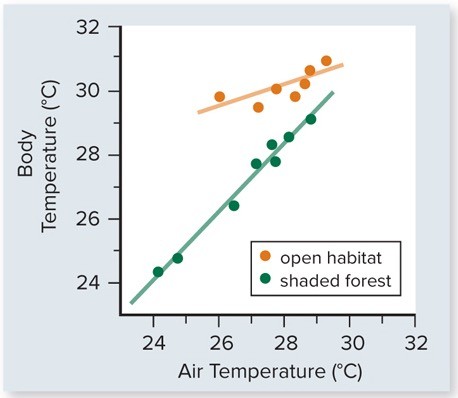Name the neuromuscular transmitter that is released into the synaptic cleft.
A. calcium ions
B. creatine phosphate
C. acetylcholine
D. sodium ions
E. ATP
Answer: C
You might also like to view...
Male crickets create sounds that we call "chirps" by rubbing one wing against the other. If another male presents himself to the singing male, the two males will fight
First they interlock antenna, then they spread their jaws, and finally they wrestle. _____________ is/are examples of communication _______________. A. All of the actions; because all involve information being sent and received by the two crickets B. Interlocking antenna and spreading jaws; but not wrestling because communication is no longer needed when the two crickets are physically in contact C. Just the initial song and the response of the second male cricket arriving in the area; between the two crickets D. Just the initial song; because it is an intraspecific signal
While conducting a survey of biodiversity in Guam, you discover a rare plant with large, conspicuous conelike reproductive structures that are red in color. Taking a cross-section of an aboveground root, you notice a conspicuous blue-green ring just beneath the root surface. This plant is most likely a
A. monocot. B. eudicot. C. Ginkgo. D. cycad. E. conifer.
Suppose that, with regard to a particular genetic locus with two alleles, A and a, we know that 60% of the alleles in the gene pool of a particular large population are A. Suppose further that we observe this population for five generations, during which we know that no mutation, selection, or migration has occurred. After this period, the frequency of the a allele is expected to be _____.
A) 0.6 B) 0.4 C) 0.25 D) 0.16 E) 0.5
The figure included shows the body temperature of lizards versus air temperature in two different habitats-open and shaded forest. Which one of the following conclusions is best supported by these data. 
A. Lizards in shaded forest habitats eat more to maintain their temperature. B. The body temperature of lizards is more constant in open than in shaded forest habitats. C. Lizards are more active in open habitats. D. Lizards sunbathe more in open habitats. E. The negative effect of air temperature on body temperature is less in shaded forest habitats because the temperature varies less there.